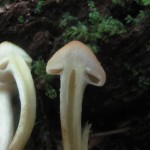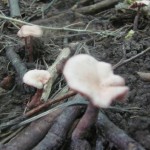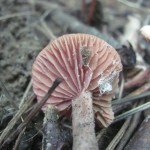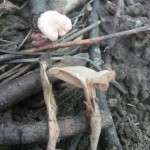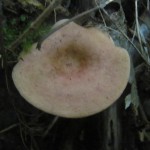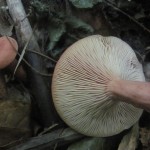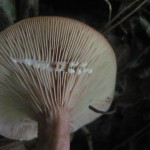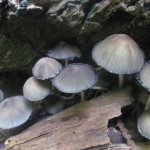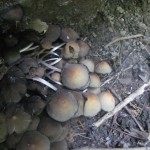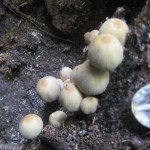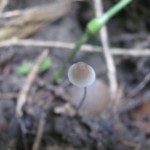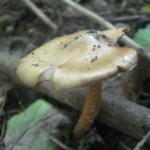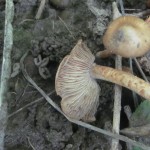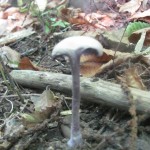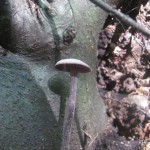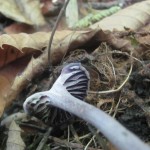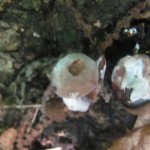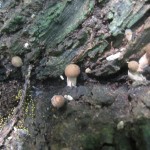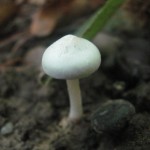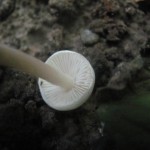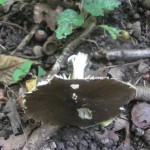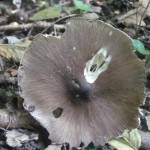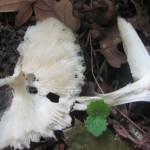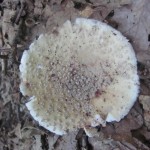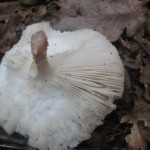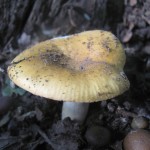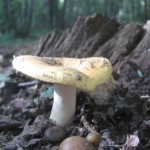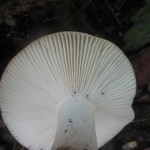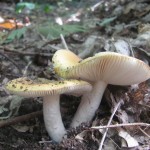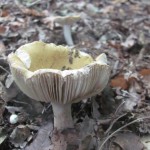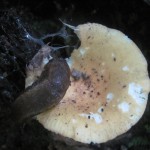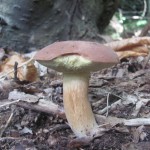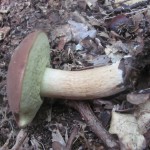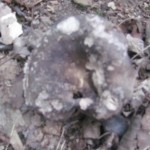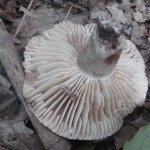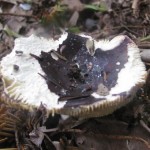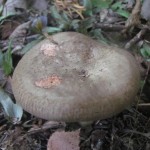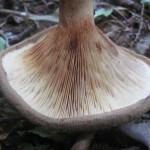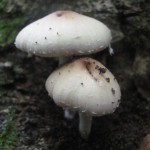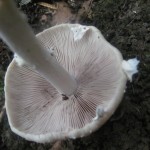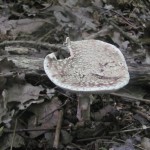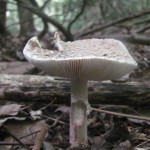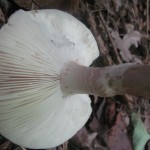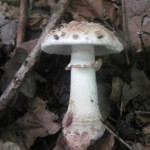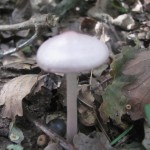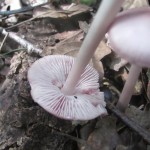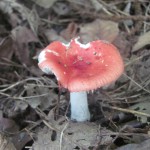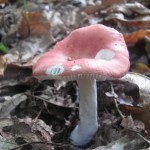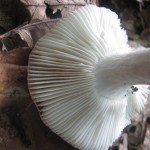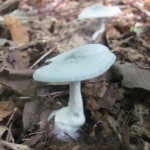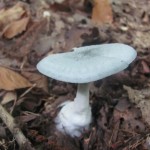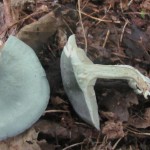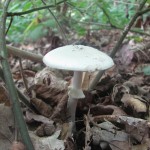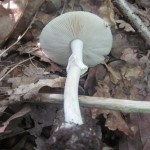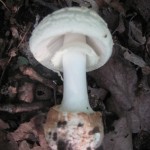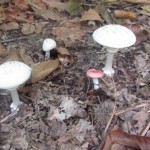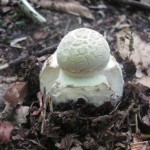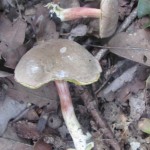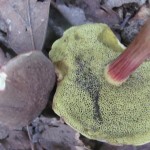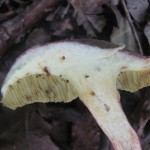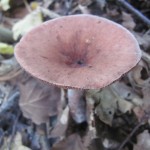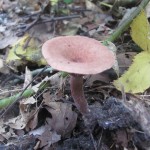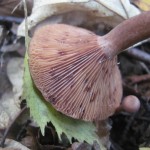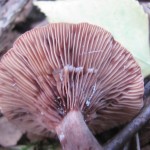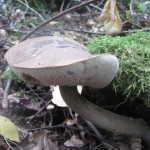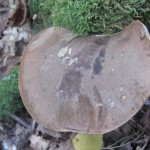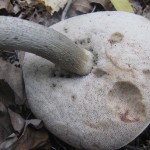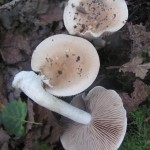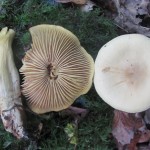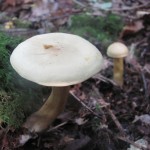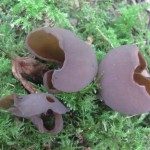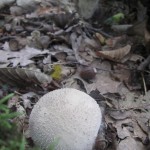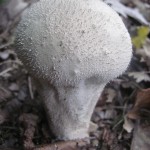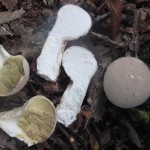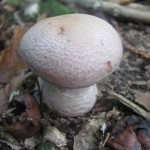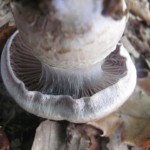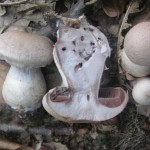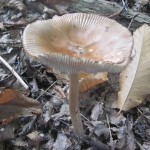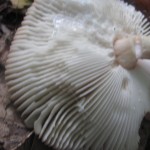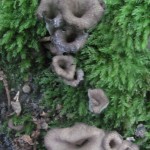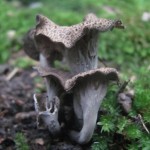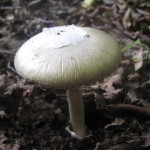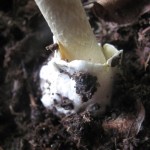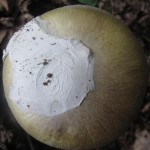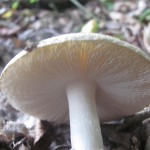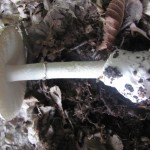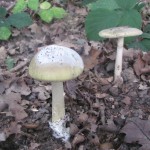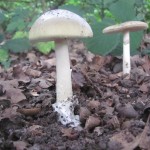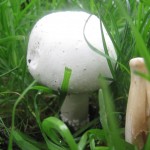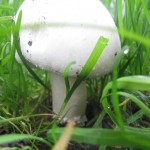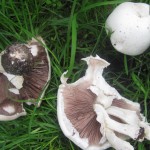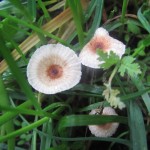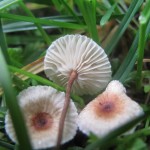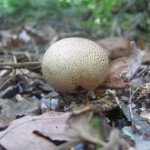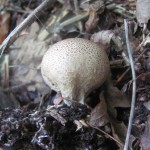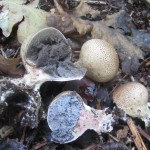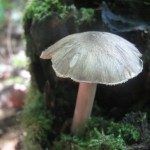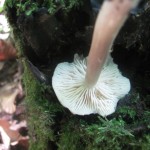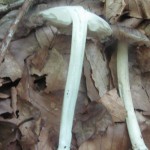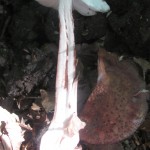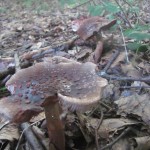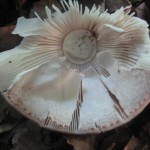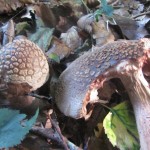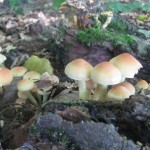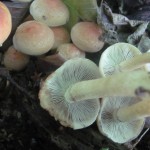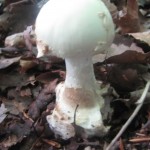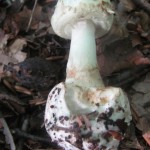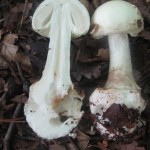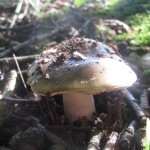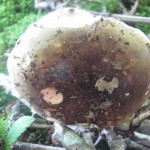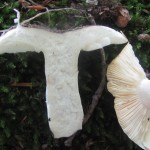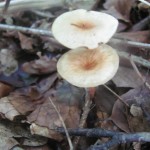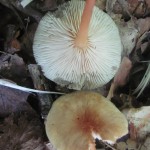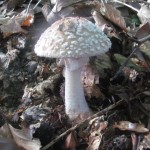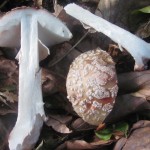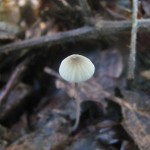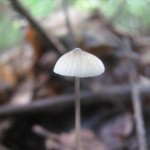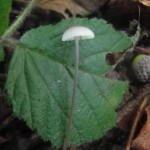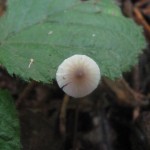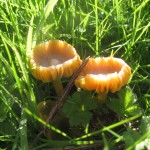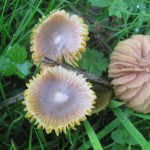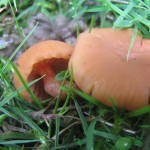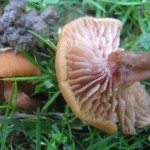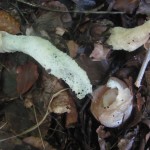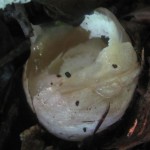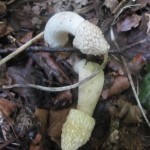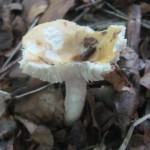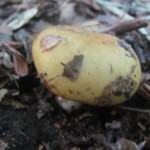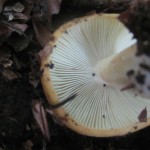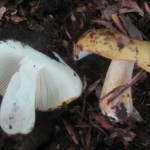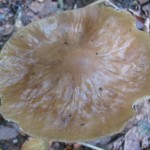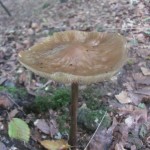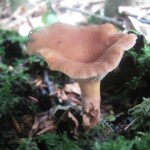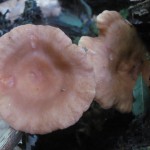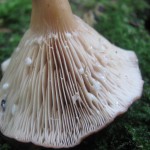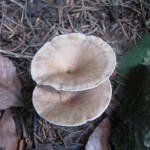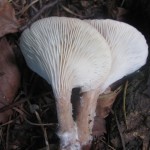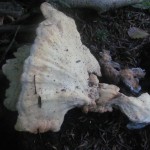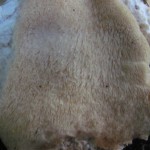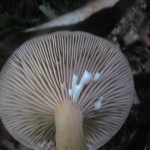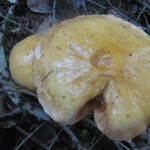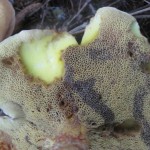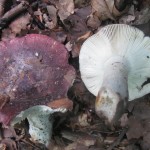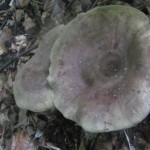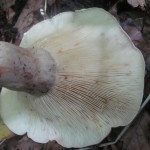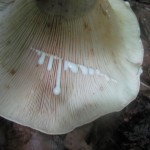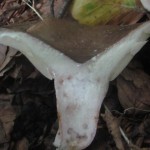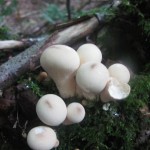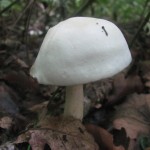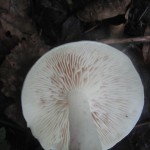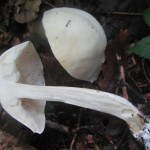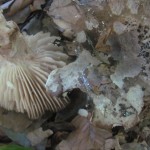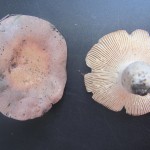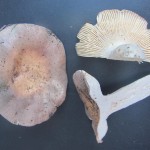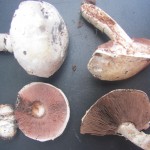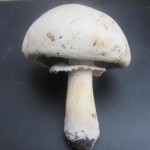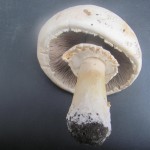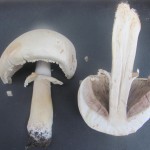A marvellous day! Late September is definitely the best time for fungi. Over 30 species including several edible ones and that’s without trying very hard. Lots as yet unidentified but most should be possible to sort them out later. Took 5 types home to eat: Curry Milkcap, Ochre Brittlegill, Bay Bolete (only 1), Common Puffball, and Horn of Plenty. (Had great fun telling people that I had been eating ‘Trumpet of Death Soup’. Very tasty soup just made of vegetable stock, a little fried onion, fried mushrooms, and cream.) The Horn of Plenty was a delight – first time I’ve found it. And there were some Deathcaps, which is always exciting – found a group of large ones hiding under a small oak.
Monthly Archives: September 2013
1. Unidentified.
- 1. Unidentified
- 1. Unidentified
2. Unidentified.
- 2. Unidentified
- 2. Unidentified
- 2. Unidentified
3. Curry Milkcap (Lactarius camphoratus).
- 3. Curry Milkcap
- 3. Curry Milkcap
- 3. Curry Milkcap
5. Glistening Inkcap (Coprinus micaceus).
- 5. Glistening Inkcap
- 5. Glistening Inkcap
6. Glistening Inkcap (Coprinus micaceus).
- 6. Glistening Inkcap
7. Snapping Bonnet (Mycena vitilis).
- 7. Snapping Bonnet
8. Type of Fibrecap.
- 8. Type of Fibrecap
- 8. Type of Fibrecap
9. Amethyst Deceiver (Laccaria amethystina).
- 9. Amethyst Deceiver
- 9. Amethyst Deceiver
- 9. Amethyst Deceiver
10. Unidentified.
- 10. Unidentified
- 10. Unidentified
11. Unidentified.
- 11. Unidentified
- 11. Unidentified
12. Pluteus ephebeus.
- 12. Pluteus ephebeus
- 12. Pluteus ephebeus
- 12. Pluteus ephebeus
13. Type of Amanita.
- 13. Type of Amanita
- 13. Type of Amanita
14. Ochre Brittlegill (Russula ochroleuca).
- 14. Ochre Brittlegill
- 14. Ochre Brittlegill
- 14. Ochre Brittlegill
- 14. Ochre Brittlegill
- 14. Ochre Brittlegill
- 14. Ochre Brittlegill
15. Bay Bolete (Boletus badius).
- 15. Bay Bolete
- 15. Bay Bolete
- 15. Bay Bolete
16. Type of Russula.
- 16. Type of Russula
- 16. Type of Russula
17. Purple Russula (Russula atropurpurea).
- 17. Purple Russula
18. Brown Rollrim (Paxillus involutus).
- 18. Brown Rollrim
- 18. Brown Rollrim
19. Unidentified.
- 19. Unidentified
- 19. Unidentified
20. The Blusher (Amanita rubescens).
- 20. The Blusher
- 20. The Blusher
- 20. The Blusher
- 20. The Blusher
21. Unidentified.
- 21. Unidentified
- 21. Unidentified
22. Type of Russula.
- 22. Type of Russula
- 22. Type of Russula
- 22. Type of Russula
23. Aniseed Funnel (Clitocybe odora).
- 23. Aniseed Funnel
- 23. Aniseed Funnel
- 23. Aniseed Funnel
24. White False Deathcap (Amanita citrina).
- 24. White False Deathcap
- 24. White False Deathcap
- 24. White False Deathcap
- 24. White False Deathcap
- 24. White False Deathcap
25. Red Cracking Bolete (Boletus chrysenteron).
- 25. Red Cracking Bolete
- 25. Red Cracking Bolete
- 25. Red Cracking Bolete
26. Curry Milkcap (Lactarius camphoratus).
- 26. Curry Milkcap
- 26. Curry Milkcap
- 26. Curry Milkcap
- 26. Curry Milkcap
27. Wood Bolete (Buchwaldoboletus lignicola).
- 27. Wood Bolete
- 27. Wood Bolete
- 27. Wood Bolete
28. Unidentified.
- 28. Unidentified
29. Sulphur Knight (Tricholoma sulphureum).
- 29. Sulphur Knight
- 29. Sulphur Knight
30. Jelly Ear (Auricularia auricula-judae).
- 30. Jelly Ear
31. Common Puffball (Lycoperdon perlatum).
- 31. Common Puffball
- 31. Common Puffball
- 31. Common Puffball
32. Type of Webcap.
- 32. Type of Webcap
- 32. Type of Webcap
- 32. Type of Webcap
34. Unidentified.
- 34. Unidentified
- 34. Unidentified
35. Horn of Plenty (Craterellus cornucopioides).
- 35. Horn of Plenty
- 35. Horn of Plenty
36. Deathcap (Amanita phalloides).
- 36. Deathcap
- 36. Deathcap
- 36. Deathcap
- 36. Deathcap
- 36. Deathcap
- 36. Deathcap
- 36. Deathcap
22th September 2013, Ladywell Fields
Some more Horse Mushrooms growing in the park. Plus some small, quite striking, Collybia Inodora growing in the short grass near a beech tree. Couldn’t identify this when I was relying upon Roger Phillips, but then managed to find it in my new Buczacki book.
1. Horse Mushroom (Agaricus arvensis).
- 1. Horse Mushroom
- 1. Horse Mushroom
- 1. Horse Mushroom
2. Collybia Inodora.
- 2. Collybia Inodora
- 2. Collybia Inodora
20th September 2013, Andrew’s Wood near Shoreham
Hurrah, lots different mushrooms! Yarboo, nothing obviously edible or in enough quantity. Had a very good look on the patch of ground where I’ve found Ceps before, but nothing at all this year. Still, very pleasing to be able to identify the majority of my finds, even if a few of them are not so certain.
1. Leopard Earthball (Scleroderma areolatum).
- 1. Leopard Earthball
- 1. Leopard Earthball
- 1. Leopard Earthball
2. Unidentified.
- 2. Unidentified
- 2. Unidentified
- 2. Unidentified
3. The Blusher (Amanita rubescens).
- 3. The Blusher
- 3. The Blusher
- 3. The Blusher
- 3. The Blusher
- 3. The Blusher
4. Sulphur Tuft (Hypholoma fasciculare).
- 4. Sulphur Tuft
- 4. Sulphur Tuft
5. White False Deathcap (Amanita citrina).
- 5. White False Deathcap
- 5. White False Deathcap
- 5. White False Deathcap
6. Olive Brittlegill (Russula olivacea).
- 6. Olive Brittlegill
- 6. Olive Brittlegill
- 6. Olive Brittlegill
7. Unidentified.
- 7. Unidentified
- 7. Unidentified
8. Grey Spotted Amanita (Amanita Excelsa).
- 8. Grey Spotted Amanita
- 8. Grey Spotted Amanita
9. Dripping Bonnet (Mycena rorida).
- 9. Dripping Bonnet
- 9. Dripping Bonnet
- 9. Dripping Bonnet
- 9. Dripping Bonnet
10. Parrot Waxcap (Hygrocybe psittacina).
- 10. Parrot Waxcap
- 10. Parrot Waxcap
11. Unidentified.
- 11. Unidentified
- 11. Unidentified
12. Stinkhorn (Phallus impudicus).
- 12. Stinkhorn
- 12. Stinkhorn
- 12. Stinkhorn
13. Ochre Brittlegill (Russula ochroleuca).
- 13. Ochre Brittlegill
- 13. Ochre Brittlegill
- 13. Ochre Brittlegill
- 13. Ochre Brittlegill
15. Rooting Shank (Xerula radicata).
- 15. Rooting Shank
- 15. Rooting Shank
16. Mild Milkcap (Lactarius subdulcis).
- 16. Mild Milkcap
- 16. Mild Milkcap
- 16. Mild Milkcap
17. Unidentified.
- 17. Unidentified
- 17. Unidentified
18. Unidentified.
- 18. Unidentified
- 18. Unidentified
19. Type of Milkcap.
- 19. Type of Milkcap
- 19. Type of Milkcap
20. Slippery Jack (Suillus luteus).
- 20. Slippery Jack
- 20. Slippery Jack
21. Purple Russula (Russula atropurpurea).
- 21. Purple Russula
22. Lactarius fluens.
- 22. Lactarius fluens
- 22. Lactarius fluens
- 22. Lactarius fluens
- 22. Lactarius fluens
23. Stump Puffball (Lycoperdon pyriforme).
- 23. Stump Puffball
24. Blotched Woodwax (Hygrophorus eburneus).
- 24. Blotched Woodwax
- 24. Blotched Woodwax
- 24. Blotched Woodwax
25. Unidentified.
- 25. Unidentified
7th September 2013, Ladywell Fields near Catford
It’s Autumn! I was just wandering around the park without a camera and found the a few odds and ends, so took them home.
This Russula was growing close to a large Beech and I’ve tentatively identified it as Olive Brittlegill. I could easily be wrong. It’s a sort of lilac-brown, not olive coloured, but colour can be misleading with Russulas and it was growing under a beech. There’s several Russulas that are allied with beech trees and this seems the most likely, although it is uncommon. The photo seems to show cross-connections between the gills (which I didn’t notice at the time) and Olive Brittlegill has these near the stem. The book says it’s very similar to Russula alutacea and they’re both edible, but my id was much too shaky for munching.
There were three smallish Agricus mushrooms growing near a Horse Chestnut. Definitely some species of Agricus but I can’t decide which. Two of them were quite maggoty but the last was young and fresh
There’s a small patch in the park where these large Horse Mushrooms always come up, and there were lots this year. Unfortunately it’s right next to a busy footpath so they nearly always get kicked over before they can mature. But I took this one home and had a very tasty snack.
1. Charcoal Burner (Russula cyanoxantha).
- 1. Charcoal Burner
- 1. Charcoal Burner
2. Type of Agaricus.
- 2. Type of Agaricus
3. Horse Mushroom (Agaricus arvensis).
- 3. Horse Mushroom
- 3. Horse Mushroom
- 3. Horse Mushroom


